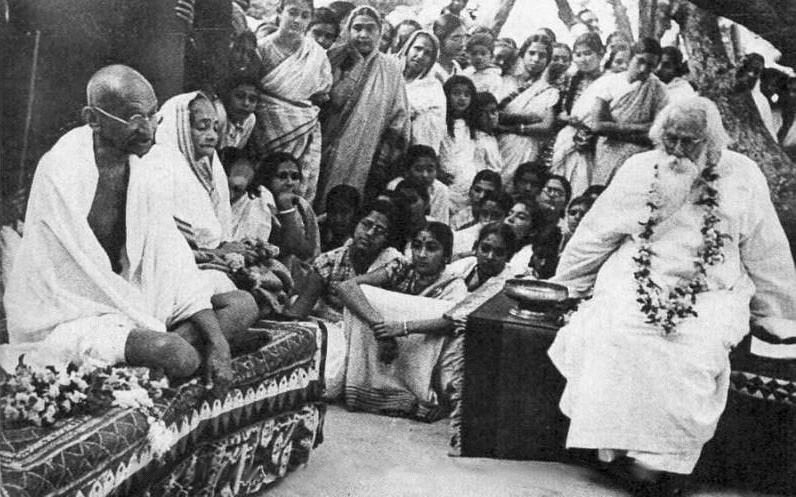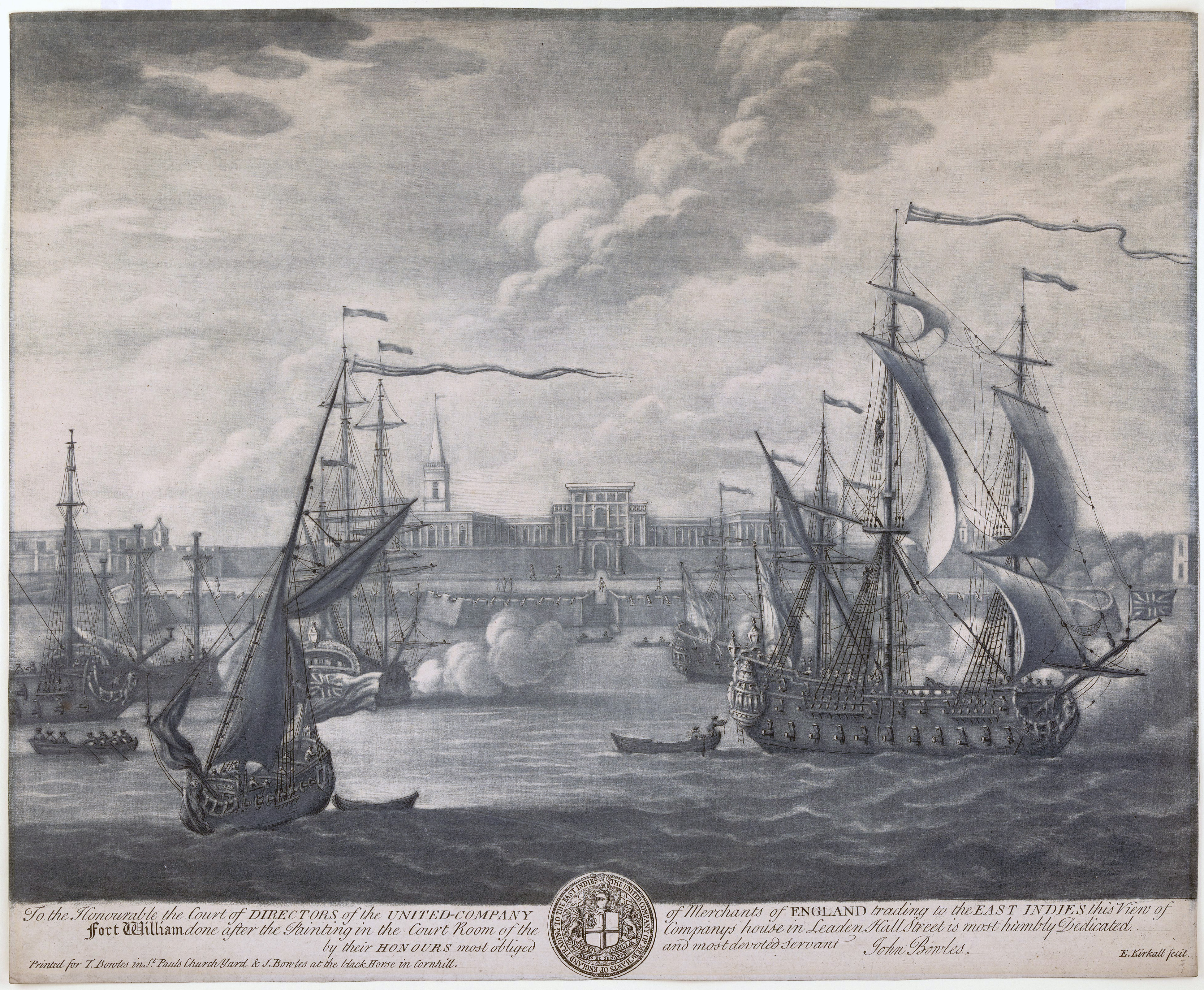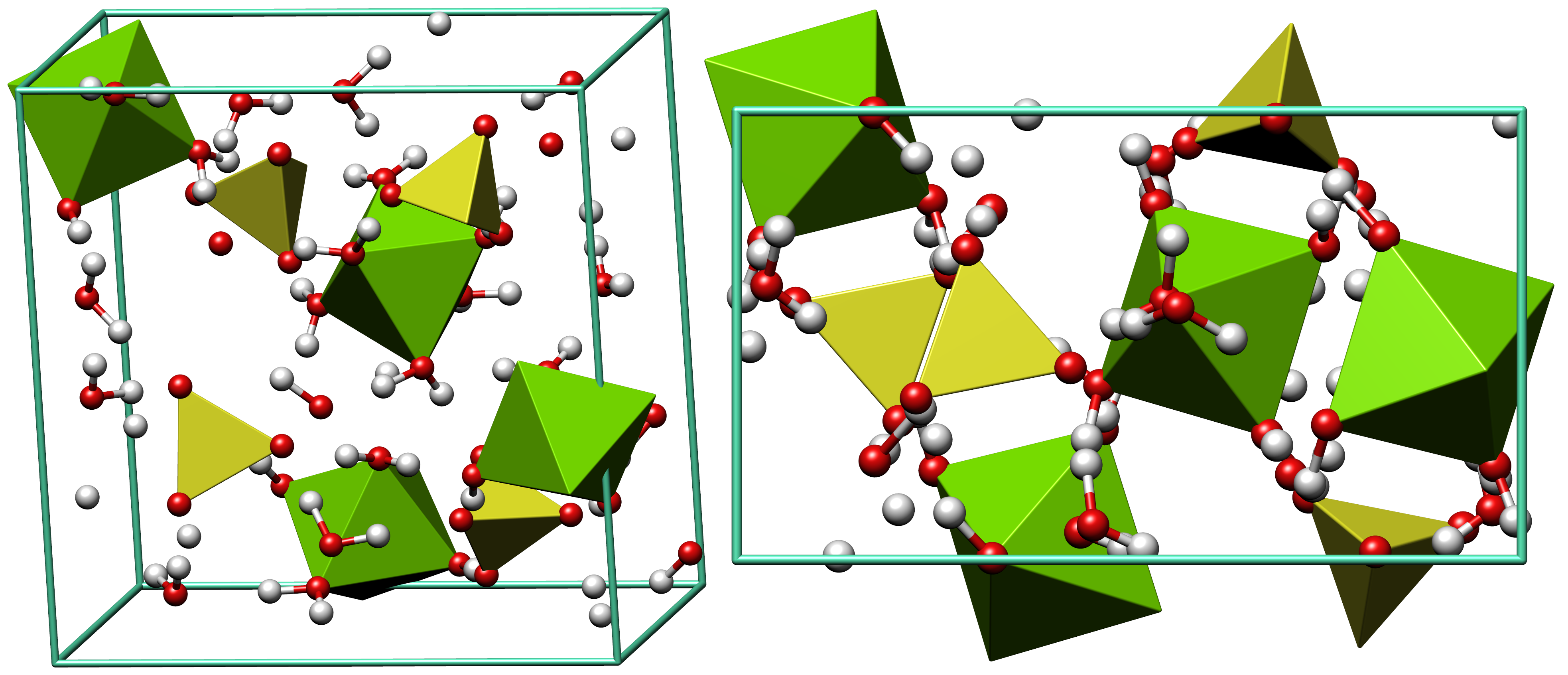|
Santiniketan Leather Goods
Santiniketan Leather Goods are leather products made in Santiniketan and surrounding villages near Kolkata, West Bengal, India. The material used is vegetable tanned leather with art work done by touch dyeing. Its artistic leather bags are popular in foreign markets and are exported to many countries including Japan and the U.S. They are generally made of E. I. Leather (East India Leather) from sheepskin and goatskin. This product has been registered for protection under the List of Geographical indications of the Trade Related Intellectual Property Rights (TRIPS) agreement. In July 2007, it was listed as "Santiniketan Leather Goods" under the GI Act 1999 of the Government of India with registration confirmed by the Controller General of Patents Designs and Trademarks under Class 18 Handicraft goods vide application number 509 for the dated 12 July 2007. History Production was started as a cottage industry about 80 years ago in a few villages surrounding Santiniketan and markete ... [...More Info...] [...Related Items...] OR: [Wikipedia] [Google] [Baidu] |
Santiniketan
Santiniketan is a neighbourhood of Bolpur town in the Bolpur subdivision of Birbhum district in West Bengal, India, approximately 152 km north of Kolkata. It was established by Maharshi Devendranath Tagore, and later expanded by his son, Rabindranath Tagore whose vision became what is now a university town with the creation of Visva-Bharati.Pearson, WW.: ''Santiniketan Bolpur School of Rabindranath Tagore'', illustrations by Mukul Dey, The Macmillan Company, 1916 History In 1863, Debendranath Tagore took on permanent lease of land, with two (Alstonia scholaris) trees, at an annual payment of Rs. 5, from Bhuban Mohan Sinha, the talukdar of Raipur, Birbhum. He built a guest house there and named it ''Shantiniketan'' (the abode of peace). Gradually, the whole area came to be known as Shantiniketan.Basak, Tapan Kumar, ''Rabindranath-Santiniketan-Sriniketan (An Introduction)'', p. 2, B.B.Publication Binoy Ghosh says that Bolpur was a small place in the middle of the 19th c ... [...More Info...] [...Related Items...] OR: [Wikipedia] [Google] [Baidu] |
Kolkata
Kolkata (, or , ; also known as Calcutta , List of renamed places in India#West Bengal, the official name until 2001) is the Capital city, capital of the Indian States and union territories of India, state of West Bengal, on the eastern bank of the Hooghly River west of the border with Bangladesh. It is the primary business, commercial, and financial hub of East India, Eastern India and the main port of communication for North-East India. According to the 2011 Indian census, Kolkata is the List of cities in India by population, seventh-most populous city in India, with a population of 45 lakh (4.5 million) residents within the city limits, and a population of over 1.41 crore (14.1 million) residents in the Kolkata metropolitan area, Kolkata Metropolitan Area. It is the List of metropolitan areas in India, third-most populous metropolitan area in India. In 2021, the Kolkata metropolitan area crossed 1.5 crore (15 million) registered voters. The ... [...More Info...] [...Related Items...] OR: [Wikipedia] [Google] [Baidu] |
West Bengal
West Bengal (, Bengali: ''Poshchim Bongo'', , abbr. WB) is a state in the eastern portion of India. It is situated along the Bay of Bengal, along with a population of over 91 million inhabitants within an area of . West Bengal is the fourth-most populous and thirteenth-largest state by area in India, as well as the eighth-most populous country subdivision of the world. As a part of the Bengal region of the Indian subcontinent, it borders Bangladesh in the east, and Nepal and Bhutan in the north. It also borders the Indian states of Odisha, Jharkhand, Bihar, Sikkim and Assam. The state capital is Kolkata, the third-largest metropolis, and seventh largest city by population in India. West Bengal includes the Darjeeling Himalayan hill region, the Ganges delta, the Rarh region, the coastal Sundarbans and the Bay of Bengal. The state's main ethnic group are the Bengalis, with the Bengali Hindus forming the demographic majority. The area's early history featured a s ... [...More Info...] [...Related Items...] OR: [Wikipedia] [Google] [Baidu] |
Geographical Indications In India
Geography (from Greek: , ''geographia''. Combination of Greek words ‘Geo’ (The Earth) and ‘Graphien’ (to describe), literally "earth description") is a field of science devoted to the study of the lands, features, inhabitants, and phenomena of Earth. The first recorded use of the word γεωγραφία was as a title of a book by Greek scholar Eratosthenes (276–194 BC). Geography is an all-encompassing discipline that seeks an understanding of Earth and its human and natural complexities—not merely where objects are, but also how they have changed and come to be. While geography is specific to Earth, many concepts can be applied more broadly to other celestial bodies in the field of planetary science. One such concept, the first law of geography, proposed by Waldo Tobler, is "everything is related to everything else, but near things are more related than distant things." Geography has been called "the world discipline" and "the bridge between the human and t ... [...More Info...] [...Related Items...] OR: [Wikipedia] [Google] [Baidu] |
Government Of India
The Government of India ( ISO: ; often abbreviated as GoI), known as the Union Government or Central Government but often simply as the Centre, is the national government of the Republic of India, a federal democracy located in South Asia, consisting of 28 union states and eight union territories. Under the Constitution, there are three primary branches of government: the legislative, the executive and the judiciary, whose powers are vested in a bicameral Parliament, President, aided by the Council of Ministers, and the Supreme Court respectively. Through judicial evolution, the Parliament has lost its sovereignty as its amendments to the Constitution are subject to judicial intervention. Judicial appointments in India are unique in that the executive or legislature have negligible say. Etymology and history The Government of India Act 1833, passed by the British parliament, is the first such act of law with the epithet "Government of India". Basic structure The ... [...More Info...] [...Related Items...] OR: [Wikipedia] [Google] [Baidu] |
Visva-Bharati University
Visva-Bharati () is a public central university and an Institution of National Importance located in Shantiniketan, West Bengal, India. It was founded by Rabindranath Tagore who called it ''Visva-Bharati'', which means the communion of the world with India. Until independence it was a college. Soon after independence, the institution was given the status of a central university in 1951 by an act of the Parliament. Overview '' The Hindu'' writes, "Santiniketan in many ways is still quite different compared to other universities in the country. Located at Bolpur in Birbhum district of West Bengal, the university still has the rural trappings that Tagore dreamt of. The classes are still held in the open under the shade of huge mango trees and students and tutors alike still travel by cycles to keep pollution at bay. The old buildings, even those that were made up of mud walls and thatched roofs, are still intact and find a place within the main campus. While some are preserved ... [...More Info...] [...Related Items...] OR: [Wikipedia] [Google] [Baidu] |
Leather Crafting
Leather crafting or simply leathercraft is the practice of making leather into craft objects or works of art, using shaping techniques, coloring techniques or both. Techniques Dyeing The application of pigments carried by solvents or water into the pores of the leather. Can be applied to tooled or untooled leather, either for even coloration or to highlight certain areas. For example, application to a tooled piece can result in pooling in the background areas giving contrasts and depth. There are oil, alcohol, and water based leather dyes available. Although the water-based alternatives tend to not work as well due to poor penetration. Painting Leather painting differs from leather dyeing in that paint remains only on the surface while dyes are absorbed into the leather. Due to this difference, leather painting techniques are generally not used on items that can or must bend nor on items that receive friction, such as belts and wallets because under these conditions, the pai ... [...More Info...] [...Related Items...] OR: [Wikipedia] [Google] [Baidu] |
Batik
Batik is an National costume of Indonesia, Indonesian technique of Resist dyeing, wax-resist dyeing applied to the whole cloth. This technique originated from the island of Java, Indonesia. Batik is made either by drawing dots and lines of the resist with a spouted tool called a ''canting'', or by printing the resist with a copper stamp called a ''cap''. The applied wax resists dyes and therefore allows the artisan to colour selectively by soaking the cloth in one colour, removing the wax with boiling water, and repeating if multiple colours are desired. Batik is an ancient art form of Indonesia made with wax resistant dye on fabrics. Indonesian coastal batik (''batik pesisir'') made in the island of Java has a history of acculturation, a mixture of native and foreign cultures. It is a newer model compared to inland batik, and it uses more colors, though the patterns are a lot less intricate. This is because inland batik used to be made by select experts living in palace are ... [...More Info...] [...Related Items...] OR: [Wikipedia] [Google] [Baidu] |
Epsom Salt
Epsomite, Epsom salt, or magnesium sulfate heptahydrate, is a hydrous magnesium sulfate mineral with formula MgSO4·7H2O. Epsomite crystallizes in the orthorhombic system as rarely found acicular or fibrous crystals, the normal form is as massive encrustations. It is colorless to white with tints of yellow, green and pink. The Mohs hardness is 2 to 2.5 and it has a low specific gravity of 1.67. It is readily soluble in water. It absorbs water from the air and converts to hexahydrate with the loss of one water molecule and a switch to monoclinic structure. Etymology It was first systematically described in 1806 for an occurrence near Epsom, Surrey, England, after which it was named. Discovery and occurrence Epsomite forms as encrustations or efflorescences on limestone cavern walls and mine timbers and walls, rarely as volcanic fumarole deposits, and as rare beds in evaporite layers such as those found in certain bodies of salt water. It occurs in association with melanteri ... [...More Info...] [...Related Items...] OR: [Wikipedia] [Google] [Baidu] |
Oxidation
Redox (reduction–oxidation, , ) is a type of chemical reaction in which the oxidation states of substrate change. Oxidation is the loss of electrons or an increase in the oxidation state, while reduction is the gain of electrons or a decrease in the oxidation state. There are two classes of redox reactions: * ''Electron-transfer'' – Only one (usually) electron flows from the reducing agent to the oxidant. This type of redox reaction is often discussed in terms of redox couples and electrode potentials. * ''Atom transfer'' – An atom transfers from one substrate to another. For example, in the rusting of iron, the oxidation state of iron atoms increases as the iron converts to an oxide, and simultaneously the oxidation state of oxygen decreases as it accepts electrons released by the iron. Although oxidation reactions are commonly associated with the formation of oxides, other chemical species can serve the same function. In hydrogenation, C=C (and other) bond ... [...More Info...] [...Related Items...] OR: [Wikipedia] [Google] [Baidu] |
Amar Kutir
Amar Kutir (আমার কুটির) (meaning: my cottage), once a place of refuge for independence movement activists has been turned into a cooperative society for the promotion of arts and crafts. It is located on the banks of the Kopai River, about from Santiniketan in Birbhum district in the Indian state of West Bengal. History Early years In 1922, on an invitation from Rabindranath Tagore, Mohandas Karamchand Gandhi, just released after imprisonment for political activities, visited Santiniketan. Sushen Mukherjee, a young man, met him there. Mukherjee had been associated with the revolutionary movement for Indian independence for some years. His meeting with Gandhi led to the setting up of Amar Kutir in 1927. Sushen Mukherjee, the founder of Amar Kutir was born late in the eighteenth century, hailing from a remote suburb of Calcutta City, in youth, imbibed with Ramakrishna Vedanta Culture and ideology wandered vehemently to find an answer to query "What is the purpo ... [...More Info...] [...Related Items...] OR: [Wikipedia] [Google] [Baidu] |
Economy Of West Bengal
West Bengal is the primary business and financial hub of Eastern India. The state primarily dependent on agriculture and medium-sized industry. West Bengal have Jute industry, Tea industry. West Bengal is rich in minerals like coal. Since the independence of India, The Green Revolution bypassed the state. However, there has been a significant spurt in food production since the 1980s. Agriculture and Livestock Agriculture accounts for the largest share of the labour force. It contributed around 18.7% to the gross state domestic product (GSDP) in 2009–10. A plurality of the state's population are peasant farmers. Major produce Rice and potato are considered to be the principal food crops. The state is the largest source of the important food crop of rice, a staple diet across India, with an annual output of around 16.1 million tonnes in FY 2015–16, and the second-largest producer of potatoes in India with an average annual output of 11 million tonnes in FY 15. ... [...More Info...] [...Related Items...] OR: [Wikipedia] [Google] [Baidu] |






